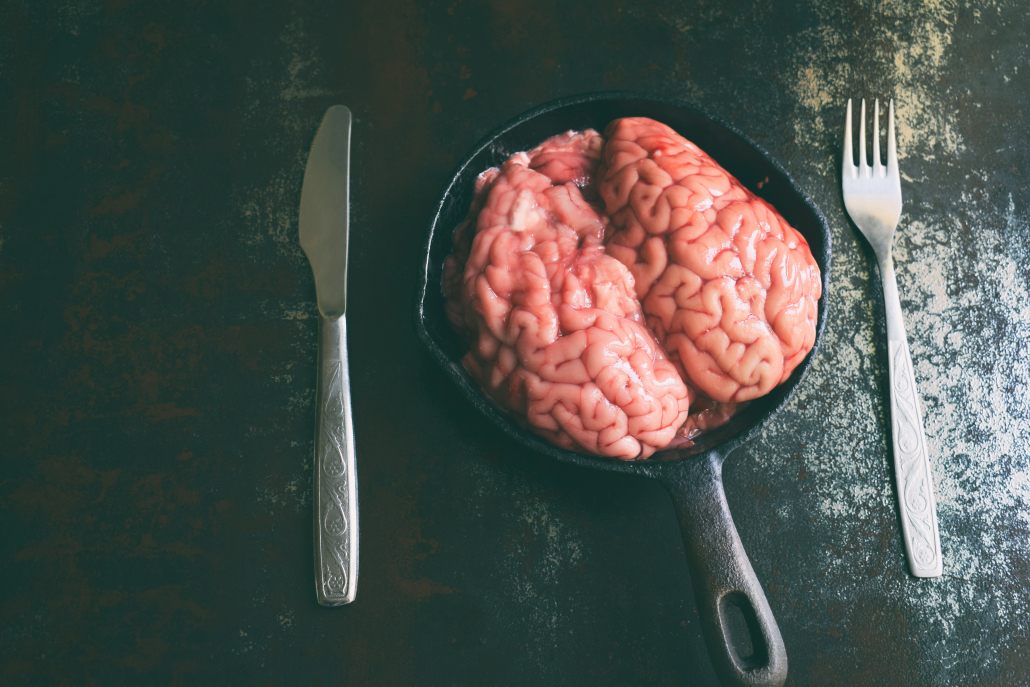We include products in articles we think are useful for our readers. If you buy products or services through links on our website, we may earn a small commission.
Brain as Food: Types, Nutrients, Health Benefits, and Recipes
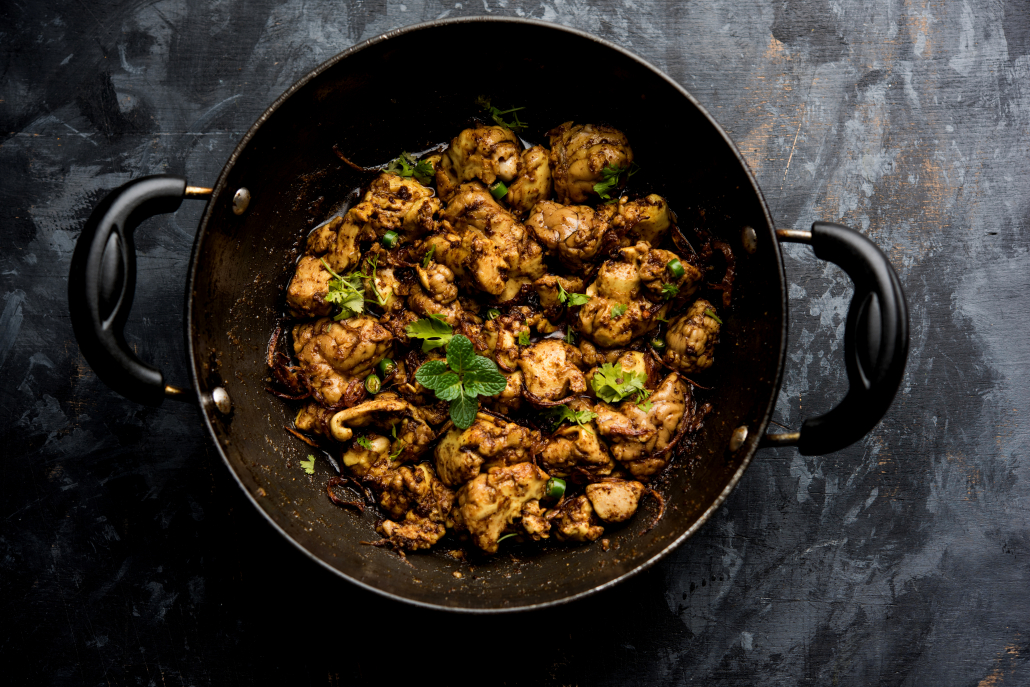
Table of Contents
Liver, kidney, sweetbreads…thought you’ve tried it all? If you haven’t tried eating animal brain as food, you just might be missing out on the many benefits of eating brain.
It’s less outlandish than most people think. Brain as food is extremely nutritious and has a track record thousands of years long. To this day it’s still very popular in many parts of the world — Spain, South America, Morocco, and France to name a few. [1]
Keep reading to learn more about the many types of animal brain and their corresponding nutrition offerings and health benefits.
Why People Eat Brain as Food
Humans have been eating animal brain since, well, humanity began.
In fact, our earliest hominin ancestors learned how to scavenge brain and bone marrow before they were smart enough to hunt. It was the incredible nutrient density of these organ meats that actually fueled the rapid growth of our own brains, allowing us to cooperate and skillfully use hunting tools.
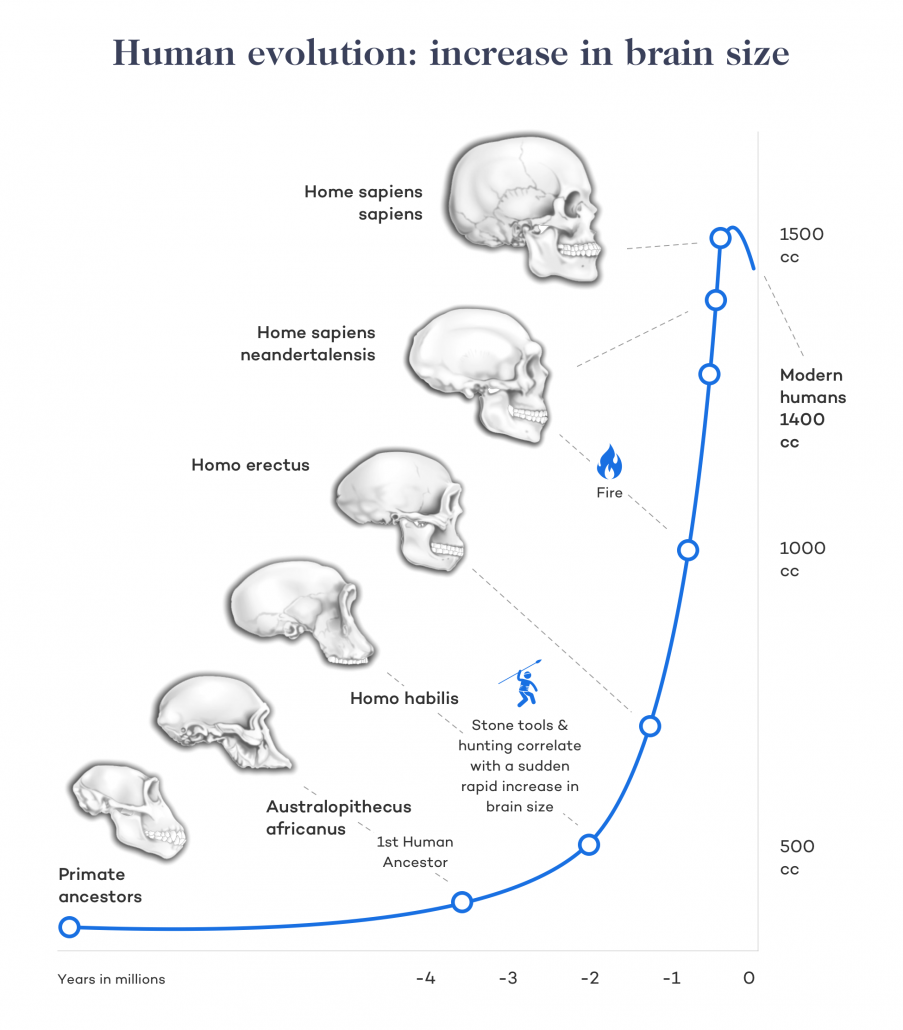
But learning how to hunt was no reason to give up organ meats. In fact, every traditional culture prized organ meats over muscle meat for its superior nutrition.
Today we’re seeing a revival of whole-animal or Nose-to-tail eating practices.
Adherents of nose-to-tail eating chose organ meats for their robust nutrition, the pleasure of exploring foreign cultural cuisines, their affordability, and because eating organs greatly reduces food waste.
Types of Brain to Eat
The brains of a wide variety of animals can be eaten safely. Different types of brains have subtly different nutritional profiles. Some of the most popular types include lamb, cow, pig, and goat brain.
| Lamb brain (100g) | Cow brain (100g) | Pig brain (100g) | |
| Calories | 120 calories | 141 calories | 127 calories |
| Total fat | 8.6 grams | 10.3 grams | 9.2 grams |
| Saturated fat | 2.2 grams | 2.3 grams | 2.1 grams |
| Cholesterol | 1,352 mg | 3,010 mg | 2,195 mg |
| Sodium | 112 mg | 126 mg | 120 mg |
| Potassium | 296 mg | 274 mg | 258 mg |
| Carbohydrates | 0 grams | 1.1 grams | 0.0 grams |
| Protein | 10.4 grams | 10.9 grams | 10.3 grams |
| Niacin | 3.3 mg | 4.2 mg | 3.4 mg |
| Riboflavin | 0.5 mg | 0.2 mg | 1 mg |
| Thiamine | 0.1 mg | 0.1 mg | 0.1 mg |
| Vitamin B6 | 0.1 mg | 0.1 mg | 0.1 mg |
| Vitamin B12 | 11.8 mg | 10.1 mg | 0.7 mg |
| Vitamin C | 10.2 mg | 10.5 mg | 8.8 mg |
| Iron | 0.8 mg | 2.3 mg | 0.7 mg |
| Magnesium | 11 mg | 12.0 mg | 16 mg |
| Phosphorus | 270 mg | 335 mg | 196 mg |
| Zinc | 1 mg | 1.1 mg | 0.8 mg |
| Copper | 0.8 mg | 0.2 mg | 27 mcg |
Nutritional Benefits of Brain
While some nutrients vary, virtually every type of brain is rich in three major nutrients: cholesterol, niacin, and B12.
Below we’ll dive deep into the nutrient content of these four types of brain.
Lamb Brain
In addition to being rich in a variety of nutrients, lamb brain is lower in calories and polyunsaturated fats than most other types of brain.
Cholesterol
Lamb brain is among nature’s very best sources of cholesterol. Just 100 grams of it contains over a thousand milligrams of dietary cholesterol.
Far from being harmful, this cholesterol can be used by your body to make important hormones like pregnenolone, which then converts into testosterone, progesterone, estrogen, and DHEA. [2]
Cholesterol is also the precursor to important neurotransmitters like dopamine. [3] Perhaps it’s not surprising that people with ‘high’ cholesterol have been found to have better “verbal fluency, attention/concentration, abstract reasoning, and [scoring in] multiple cognitive domains” than those with supposedly healthier levels. [4]
Niacin
Lamb brain is also rich in niacin, or vitamin B3.
Just 100 grams of it contains 3.3 milligrams of niacin — more than half of your recommended daily value. Niacin increases cognitive function and brain processing speed by enhancing carbohydrate oxidation. (Yes, burning carbs is important, even on a low-carb diet). [5]
B12
100 grams of lamb brain contains roughly a third of your vitamin B12 RDV.
When combined with other B12-rich foods like beef or eggs, lamb brain will allow you to easily reach your full recommended daily value.
Studies show that B12 contributes to a healthy metabolic rate by keeping cells energized. [6] And the real-world results confirm it: people who get plenty of B12 through organ meats often notice a tangible energy boost after their meals.
Other Unique Nutrients
Lamb brain is likely to contain many of the same characteristic rare nutrients as other types of brain, though more thorough nutritional analysis is needed.
These special nutrients include phosphatidylserine and BDNF-1 (brain-derived neurotrophic factor). BDNF-1, in particular, may reduce your risk of Alzheimer’s and other neurodegenerative diseases. [7]
Lamb brain likely contains some of the very same hormones our own brains depend on to stay optimal. “The brain is also the richest source of these very water-insoluble (hydrophobic) steroid hormones,” explains hormone specialist Ray Peat, Ph.D. “It has a concentration about 20 times higher than the serum […].” [8]
Cow Brain
Cow brain may very well be nature’s top source of dietary cholesterol. It’s also one of the easiest types of animal brains to find and prepare.
Cholesterol
Just 100 grams of cow brain contains over ten times the RDV for cholesterol. Don’t let this scare you away, as cholesterol recommendations are based on outdated science.
Dietary cholesterol is correlated with many positive health markers. Newer, more objective studies have shown that the official guidelines for “healthy” cholesterol levels are too low.
Even if cholesterol were harmful, the way that your body processes it means that the cholesterol you eat has very little effect on serum cholesterol levels. The body produces over 75% of it’s cholesterol on its own. [9][10]
Niacin
Cow brain is rich in niacin, also known as vitamin B3.
A 100-gram serving contains 4.2 milligrams of niacin — over half your recommended daily value. Beef brain’s niacin content makes it an easy way to safeguard your own brain’s carbohydrate metabolism. [11]
B12
Just one serving of cow brain contains over a third of your vitamin B12 RDA. This B12 plays such a direct role in cellular energy (ATP) production that many people feel noticeably more energized following a B12-rich meal. [12]
Other unique nutrients
Cow brain is a verifiably good source of many unique nutrients, including sphingomyelin, phosphatidylserine, brain-derived neurotrophic factor (BDNF-1), and other brain-boosting peptides and factors. [13]
In a perfect example of the “like-supports-like” concept of organ meat nutrition, these brain-specific nutrients support the health of your own brain.
Pig Brain
Pig brain or pork brain is quite common in many regional cuisines, especially southern cuisine in America. Here’s what we know about its nutritional highlights:
Cholesterol
Pig brain is second only to beef brain when it comes to dietary cholesterol. 100 grams of it contains close to ten times your cholesterol RDV.
As we’ve mentioned above, our cholesterol recommendations are based on outdated science. There is essentially no link between dietary cholesterol and blood cholesterol levels.
In fact, cholesterol fulfills so many essential structural and biochemical roles within our bodies that it’s correlated with increased happiness, intelligence, and creativity. [14]
Niacin
Pig brain is rich in niacin, too. 100 grams of pig brain contains 3.4 milligrams of niacin — roughly half your RDV. Adequate niacin levels are a virtual prerequisite for anyone who wants to think and feel at their best. On a low-carb or keto diet, niacin may help your brain utilize dietary carbohydrates more efficiently. [15]
B12
A serving of pig brain contains over a third of your vitamin B12 RDA. In addition to everything else we’ve mentioned about B12, keeping yourself B12-replete may offer tangible improvements in your athletic and work performance. [16]
Other Unique Nutrients
Like other types of brain, pig brain contains several special nutrients like phosphatidylserine, sphingomyelin, and BDNF-1 (brain-derived neurotrophic factor). It also contains enough of the primary ‘youth associated hormones’ — pregnenolone, progesterone, and DHEA — to help you maintain hormonal balance as you age. [17]
Goat Brain
Goat brain is especially popular in India, where it’s prized as a health food. While goat brain’s nutritional profile hasn’t been fully elucidated, we can make an educated guess and say that it contains many of the same active ingredients as other types of brain.
Cholesterol
Goat brain is likely a rich source of dietary cholesterol. In addition to serving as a precursor for dopamine, pregnenolone, progesterone, DHEA, and more, cholesterol provides literal structure to our body’s cells.
It’s also been correlated with healthy, glowing skin — so much so that many skincare companies are now infusing pure cholesterol into their products. If you want to glow up yourself, consider siding with nature by eating naturally high-cholesterol foods. [18]
Niacin
Goat brain is likely high in niacin (B3) and other B vitamins. These pro-metabolic vitamins help your body make the most of what you’re eating. [19]
B12
Goat brain is also likely to be a great source of vitamin B12. Combine it with other known B12 sources like liver or eggs and you’ll be sure to hit your RDV with ease.
Benefits of Eating Brain
Benefit of Eating Brain as Food benefit #1: Improved mood
The B vitamins featured in most animal brains are known for their mood-lifting, energy-boosting effects.
B vitamins have been shown to protect against neurodegenerative effects by keeping the brain clear of metabolic byproducts like homocysteine, that might otherwise set the stage for depression. [20] And don’t forget cholesterol’s direct correlation with improved mood, and cognitive ability.
Benefit of Eating Brain as Food Benefit #2: Better hormonal balance
Brain as food provides purified “youth-associated hormones”. Three of the top hormones in animal brain are pregnenolone, progesterone, and DHEA.
Pregnenolone
Pregnenolone provides the building blocks for the synthesis of the other two “youth-associated” hormones, which is why we’ve mentioned it first. [21]
Dietary pregnenolone gets converted into progesterone, DHEA, testosterone, and/or estrogen later on. But it also has its own set of benefits.
Many people notice a ‘face-lifting’ effect from DHEA’s ability to promote healthy muscle contraction, particularly around the face.
Progesterone
Progesterone may be known as a pregnancy hormone (thus the name), but it’s much more than that.
Progesterone protects many of your immune system’s most important glands from cortisol-related breakdown. It’s also known to be great for the skin. [22]
DHEA
DHEA is another important youthfulness-promoting hormone. Like progesterone, it’s anti-catabolic in nature — meaning it blocks the destructive effects of cortisol and other stress hormones. Higher DHEA levels are associated with increased bone and muscle growth. [23]
Benefit of Eating Brain as Food Benefit #3: Enhanced Cognitive Function
The blend of vitamins, minerals, hormones, and growth factors present in brain as food means it can benefit your own brain’s cognitive performance and boost your processing speed. [24]
Dietary animal brain may support:
- Flexible thinking (neuroplasticity)
- The growth of new neurons (neurogenesis)
- Positive pattern formation (long-term potentiation)
Yet-to-be-discovered benefits of eating brain?
It’s likely that other benefits of eating brain are yet to be discovered. Lamb’s brain and goat brain are just beginning to be researched — it’s possible that they contain nutrients that are still unknown to the scientific and medical worlds.
Concerns About Eating Brain
The mainstream coverage of prion-related diseases, notably mad cow disease, has frightened some people away from the idea of consuming animal brain.
Thankfully, mad cow disease isn’t around anymore. Mad cow disease is also not present in the young animals that brain as food is sourced from. [25]
A more realistic concern than prion diseases is poor quality products. Animals that were treated poorly during their lives may have more fibrotic, less nutritious brains.
Some research suggests that the polyamine proteins present in animal products may transmit emotions/memories into the eater. [26] Do your best to source brain from healthy, happy animals — such as those from a local organic/ethical farm. And choose grass-fed beef products whenever possible.
How to Source Quality Brain to Eat
The best way to source brain is by talking to meat producers at your local farmers market.
The second best place to look is at your local butcher.
If you want the benefits of brain, but don’t want to go through the trouble of sourcing and cooking it, quality animal brain can be obtained through a desiccated supplement.
Dr. Kiltz’s Organ Meat Supplement is one of the few organ supplements on the market that include brain (most just contain liver, kidney, and heart). Any supplement you choose should check all the following boxes:
- 3rd party testing for microbes
- 3rd party veterinarian inspection
- Nutrient preservation through freeze-drying
- Sourcing from young calves
- Organic certification
How to Cook Brain
If you do manage to find fresh, high-quality brain, then this section is for you!
The following two recipes are simple and keto-friendly. Plus they can be applied to any of the types of brains we’ve mentioned above!
Brains with Milk Gravy
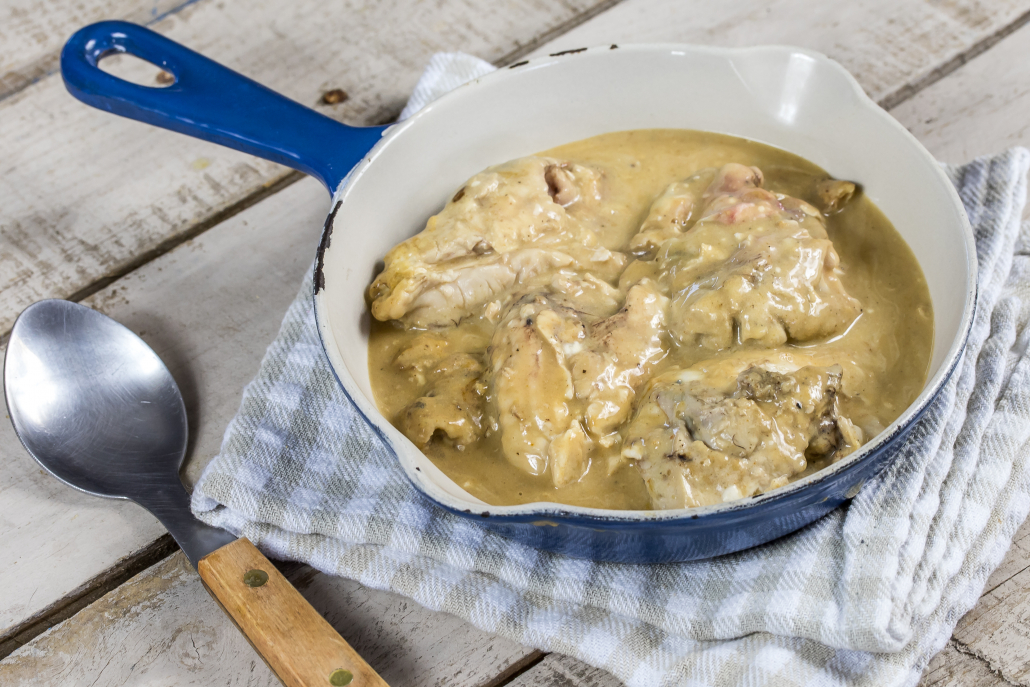
This recipe is for the more culinarily adventurous, but it’s essentially a Southern classic.
Ingredients
- 1 cow/pig brain
- 1/4 cup tallow, butter, or ghee
- 1/8 cup coconut flour
- 2 cups heavy cream
- Full-fat milk (for soaking)
- Salt and pepper (to taste)
Process
- Wash the brain and remove all outer membranes.
- Soak brain for 12 hours in a pot of milk.
- Pour the milk out, but keep the brain in its pot.
- Soak brain again, this time for 1 hour, in fresh milk.
- Poach the brains in milk for 20 minutes.
- Cool brain, strain from milk, and refrigerate.
- Remove cooking fat from fridge and place in a pan on high heat.
- Stir in coconut flour, heavy cream, and salt/pepper.
- Once this gravy develops a creamy consistency, add brain back in.
- Add salt and pepper to taste.
- Serve warm & enjoy!
Brain and Eggs Scramble
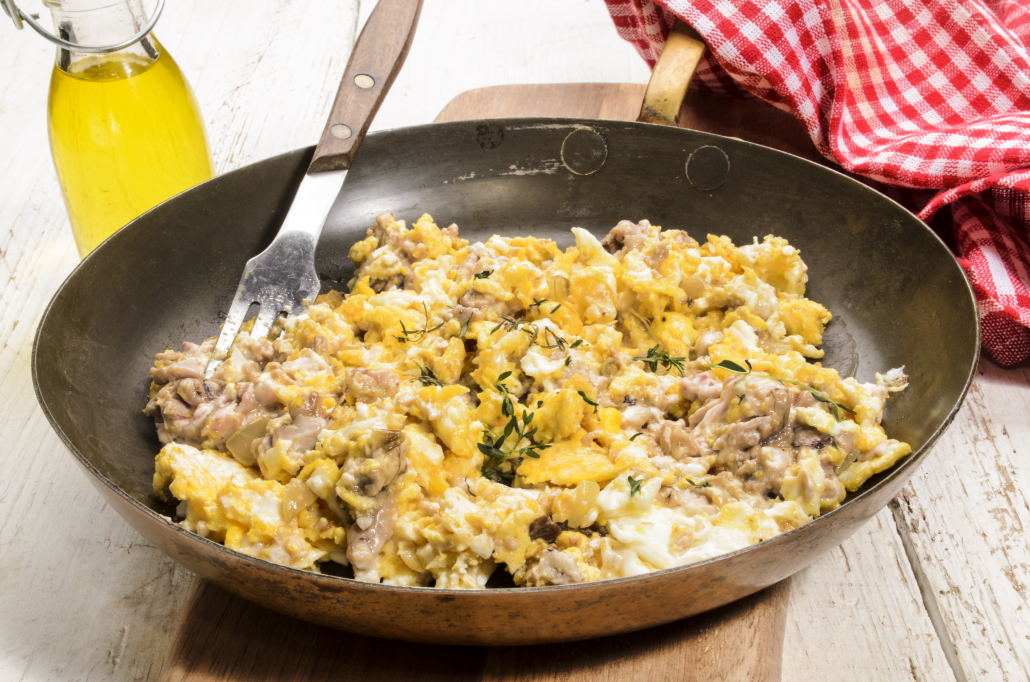
grilled pig brain with scrambled egg served in a pan
Brains and eggs is both a superfood and comfort food.
Ingredients
- I brain
- 6 pastured eggs
- 2 tablespoons butter/ghee
- Creme fraiche (optional)
- Salt to taste
Process
- Wash brain and remove its outer membranes.
- Soak brain for 1 hour in a pot of salted, cold water.
- Pour out water, but keep the brain in the pot.
- Add fresh cold water, then bring the brain to a boil.
- Boil for ten minutes, stirring occasionally.
- Drain the pot, then plunge the brain into cold water until cool.
- Remove the brain from water and slice it into thin pieces.
- Place cooked brain into a mixing bowl with eggs.
- Place butter/ghee onto a heated skillet.
- Pour the brains and eggs into the skillet, stirring often.
- Cook until eggs are just barely “set up.”
- Top with a healthy scoop of creme fraiche, then enjoy!
Brain as Food: The Takeaway
Animal brains can be a vital and safe part of true nose-to-tail eating.
Brain as food contains all the nutrients needed to boost your own brainpower and safeguard your cognitive health throughout your lifetime. So don’t let a little bit of eccentricity scare your. Brain is a true superfood that’s well worth a try. You’ll be rewarded with the many benefits of eating brain.












